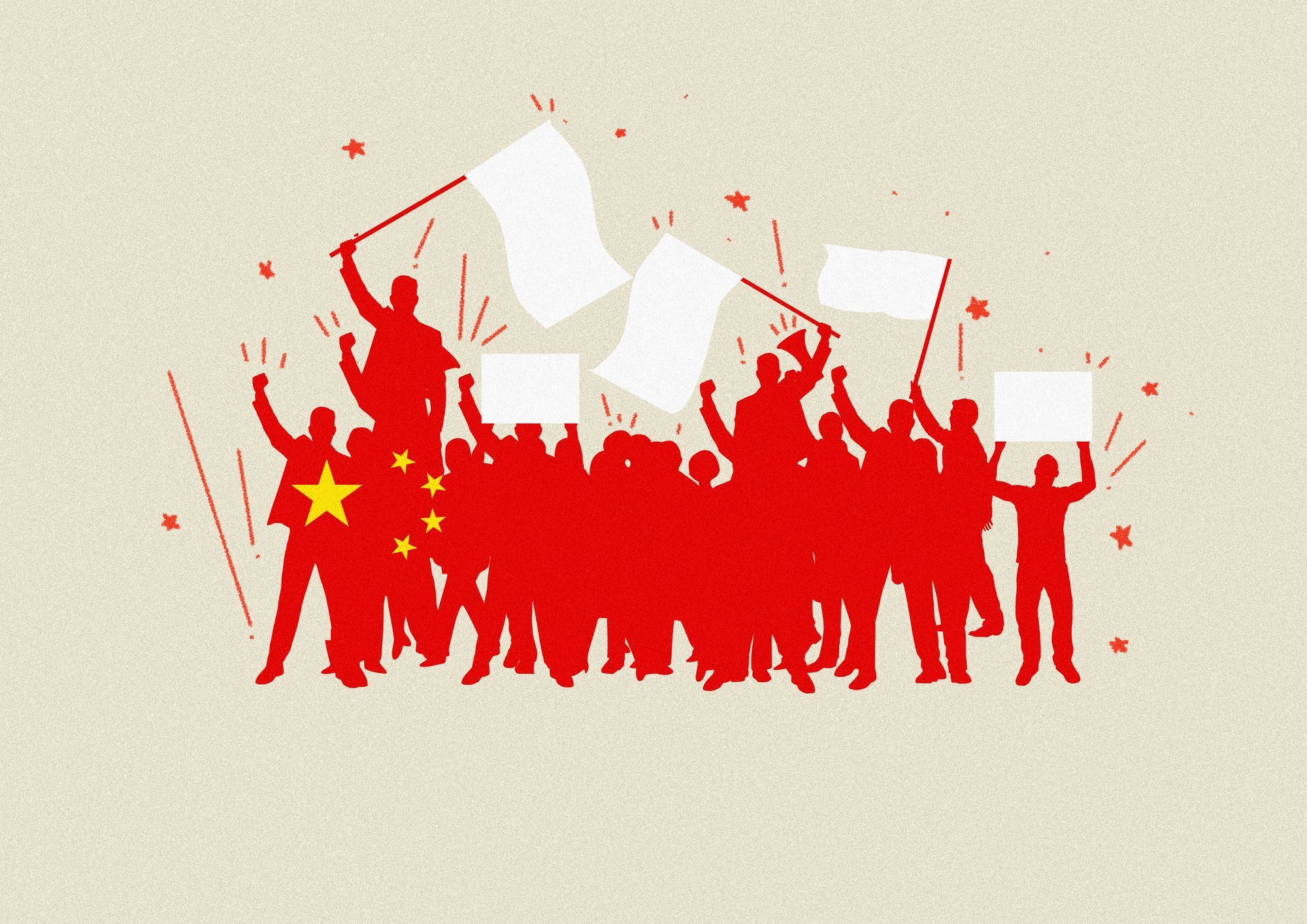„The white paper represents everything we want to say but cannot say.”
In recent weeks, protests not seen in decades erupted in China: the protesters are mainly fighting against China’s almost three years old strict zero-COVID strategy, but they also have other demands. The demonstrators have now even started to demand the resignation of the ruling party and President Xi Jinping, which is unprecedented. Such developments are very uncommon in Chinese society and raise some important questions: For instance, how long can Beijing’s zero-COVID policy be sustained? And what will the protesters have to face?
Unlike the rest of the world, China still pays attention to keeping COVID-19 under control: the world’s most populous country still has draconian rules to keep the number of infected people at zero. However, this strategy means enormous sacrifices for Chinese society due to the pandemic’s characteristics. China’s zero-COVID policy, introduced by the ruling Chinese Communist Party (CCP) and President Xi Jinping, is one of the strictest in the world. It entails weeks-long mandatory isolation, regular testing, and quarantining entire cities, among other rules. The goal is to keep China completely free of COVID-19 outbreaks.
According to the official figures, China has actually almost won its battle against the pandemic: China’s population is approximately 1.4 billion, while the daily new infections are only a few tens of thousands, a negligible proportion. The low figure is undoubtedly due to the draconian measures. China successfully avoided the death of many people and the collapse of the healthcare system. However, the zero-COVID strategy is a double-edged sword: it curbs the pandemic but has disastrous economic consequences. And perhaps even more importantly, Chinese society cannot forever tolerate endless lockdowns and quarantines.
It is clear that the Chinese Communist Party’s zero-COVID strategy is the primary reason for the current unprecedented protests. Still, there have been other signs of discontentment too. For instance, in October, a man virtually committed suicide when unfurling banners saying: „Students go on strike, workers go on strike, remove the dictator and state thief Xi Jinping.” This act in itself counts as an extreme, unacceptable criticism of the leadership in China, entailing severe consequences, but he did not stop there. His other banners declared, “We want food, not coronavirus testing; we want reforms, not Cultural Revolution. Say yes to freedom and no to lockdowns; say yes to elections and no to one leader. No to lies, yes to dignity. Do not be a slave, be a citizen.” His act was short-lived as the Chinese state, resembling the Big Brother of Orwell’s 1984, removed him soon and desperately tried to obliterate any vestiges of his performance with the virtually omnipresent censorship system.
Still, those who also want change will not forget this act despite the censorship. China is not completely isolated, and Chinese people can see that in other parts of the world, people can already enjoy events such as the World Cup in Qatar without masks, freely surrounded by others. Although the Chinese state-owned broadcaster has tried to show as little as possible from the fans without masks, completely cutting such images out was impossible. And a part of Chinese society is not pretending to be blind to defend the ruling party’s interests. Many Chinese people know what is going on in the world despite the censors’ efforts: while others are free to have fun, they are still forced from one lockdown to another.
But a tragic event on 24 November gave the final push to the extremely discontented people: On this day, a fire broke out in a building in an Uyghur-majority neighborhood in Ürümqi, the capital of Xinjiang, leading to the death of ten people. The city’s residents had been under strict lockdown measures since the beginning of August, which contributed to the tragedy. Allegedly, the residents died because they could not leave the building as the authorities locked them up in line with the strict zero-COVID policy. The authorities deny these claims, but not everyone believes them. The commemorations escalated into demonstrations, and the protestors demand now not just to ease the lockdown measures but protest against the whole political system.
In a rare surge of protests in China, demonstrators called for the ruling Communist Party and its leader, Xi Jinping, to step down, amid anger at the deaths of at least 10 people in an apartment fire in Xinjiang, presumably during a strict Covid lockdown. https://t.co/7eT7YT4nHw pic.twitter.com/WT54Q0yC1M
— The New York Times (@nytimes) November 27, 2022
So the tragic fire was the last straw for an already disgruntled and exhausted Chinese society. Crowds gathered to protest in many cities, including Shanghai, Beijing, and Wuhan. Although demonstrations sometimes do happen in China, they usually start because of a local issue and do not concern the leadership in Beijing. They pose no threat to the regime and involve only relatively few people. But the current situation is different: it is for a cause that affects Chinese society as a whole. Probably the anger against the zero-COVID strategy and other things accumulated over the years in China, and the protests now target the system’s core instead of merely local issues.
The protest started in Ürümqi, the capital of the heavily oppressed Xinjiang Uygur Autonomous Region. The Chinese state censorship already controlled the Friday (25 November) protests on Saturday. The authorities promised to ease the lockdown measures in the region to calm the protesters, but it was already not enough as protests have already begun in many other cities in the country, particularly on university campuses. The spark of the demonstrations was the zero-COVID policy, but they soon escalated into protests against the regime and specifically against President Xi Jinping. Such protests are quite usual in the West as we can demonstrate against flawed policies or even governments, but in China, the circumstances are fundamentally different. In the Chinese authoritarian state with brutal censorship and ever-present surveillance, only courageous citizens risk participating in demonstrations, as the police are also not afraid to use violence.
In 1989, 33 years ago, the then-leadership of China ruthlessly turned the demonstrations into a massacre when the people in the Tiananmen Square protests demanded a more democratic government. The protests began in April 1989, and an increasingly larger crowd gathered in Tiananmen Square (Tiananmen means „Gate of Heavenly Peace). The disgruntled crowd even blocked the way of the visiting Soviet leader, Mikhail Gorbachev. The protesters occupied public squares, started hunger strikes, and even erected a statue of democracy in the image of the American Statue of Liberty. But retaliation came soon; on 4 June, about a month and a half after the protests began, the police started a ruthless massacre. The death toll has been in dispute since 1989. At the end of June this year, the Chinese leadership released an official figure of around two hundred civilian deaths, but a 2017 document estimates that the actual number could be many times higher and could even exceed ten thousand.
Tiananmen Square protests: 1989 peaceful protests challenging the legitimacy of the Chinese Communist Party from April to a June 4 massacre by the army in which 500 or more were massacred. Protestors erected a statue of liberty. One man famously faced down a line of tanks. pic.twitter.com/qZVdkCN2Rf
— Visual Dictionary (@VisDictionary) November 30, 2022
Many current protesters were not even alive when the Tiananmen massacre happened, and the 1989 protests are not often discussed in China due to the strict censorship. Therefore, the massacre is probably not very intimidating for the demonstrators in 2022. People are now openly protesting against Xi Jinping with blank sheets of paper as symbols. The demonstrators hold up these blank pieces, which symbolize silencing. One protester told Reuters that „the white paper represents everything we want to say but cannot say.”
Of course, the authorities did not leave the protests unnoticed, but extremely violent retaliation has not happened yet. Still, the police have arrested people, and violence against demonstrators is also becoming frequent. In addition, those loyal to the regime also often attack the protesters, ripping their meaningful blank papers. Students at the prestigious Tsinghua University (the alma mater of Xi Jinping) made an even more expressive symbol: they write the Friedmann equations on their sheets, a near homophone for „free man,” used to estimate the rate of expansion of the universe in physical cosmology. The Friedmann equations allude to the country’s „inevitable opening up” when freedom comes to Chinese society.
At Tsinghua University, alma mater of Chinese President Xi Jinping, students raised pieces of paper featuring a cryptic formula. The unconventional signs immediately grabbed the attention & were soon identified the formula as one of the Friedmann equationshttps://t.co/TR6zhJS6Sp
— 🇮🇳🆂🅰🅼🐤 (@samwham6) November 28, 2022
We cannot see the protests’ consequences yet. On the one hand, the end of the zero-COVID policy would be a defeat for Xi Jinping, who tried to prove that China is more efficient than the West by keeping COVID-19 infections low. On the other hand, this policy is clearly and undoubtedly unsustainable: Chinese society cannot tolerate it anymore, and it ruins the country’s economy. The zero-COVID policy successfully contained the coronavirus pandemic, but it became evident that not even Chinese society can bear it anymore despite being accustomed to surveillance and oppression. It seems protesters are ready to face the consequences of the demonstrations, so we cannot yet predict the results and how severe the regime’s counteractions will be.
Graphics: Réka Pisla

Wrapped in letters | Regional Gift Guide

Salgótarján: the essence of late modern architecture










